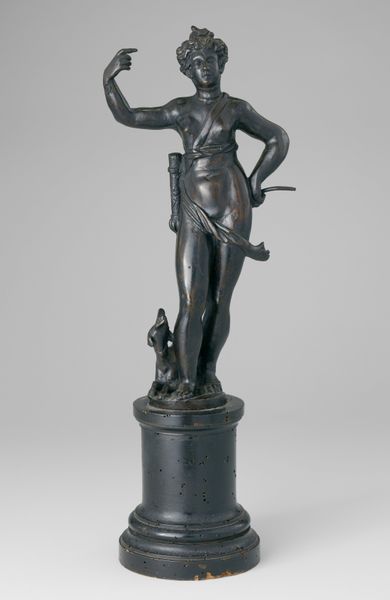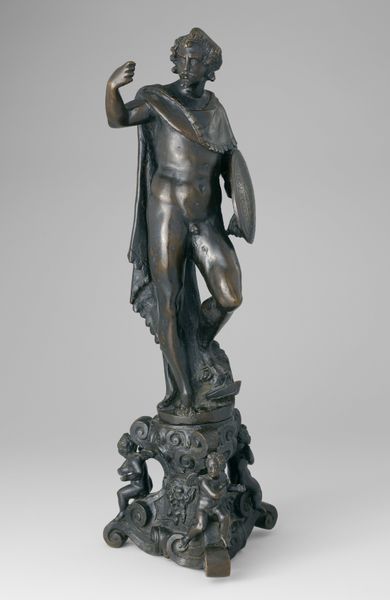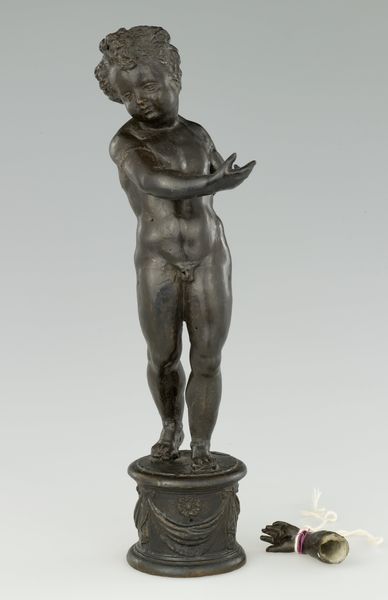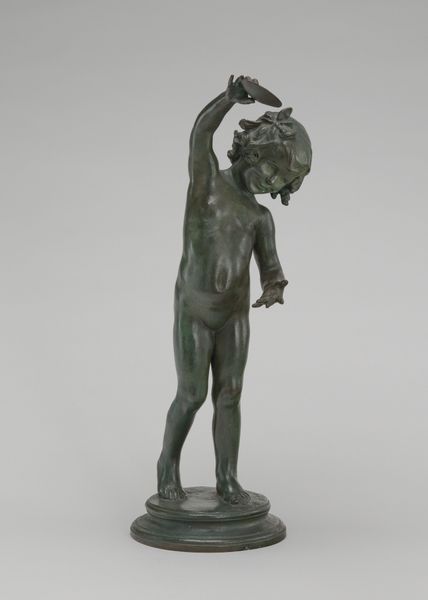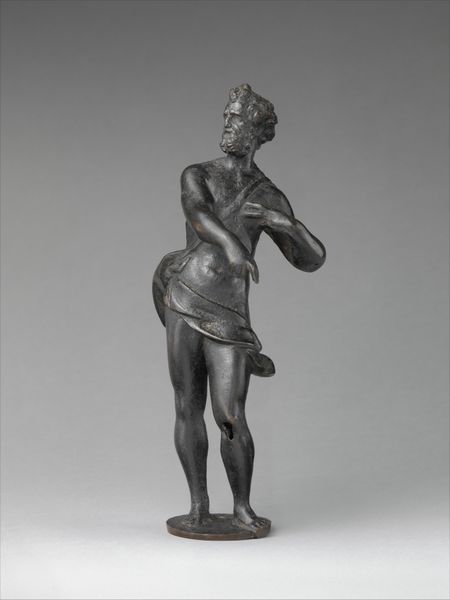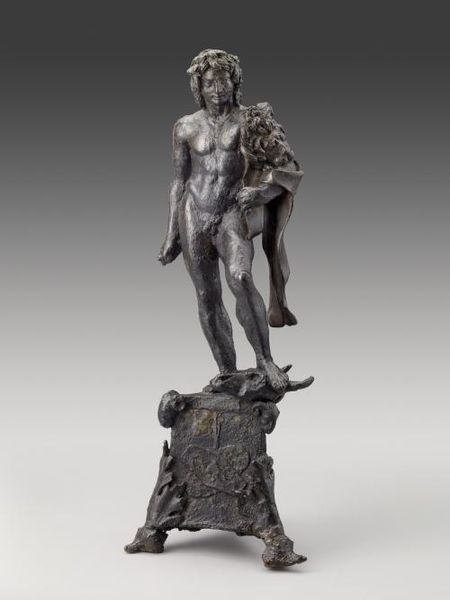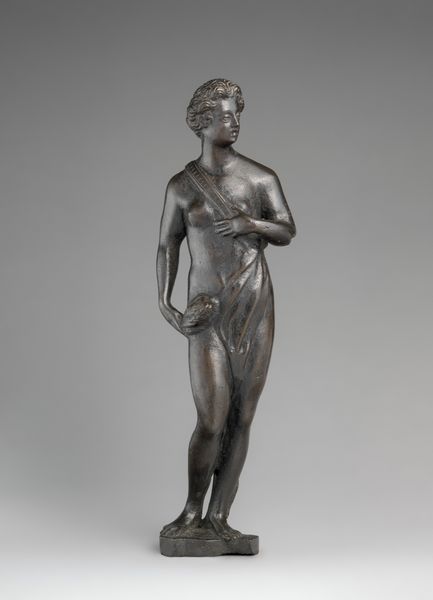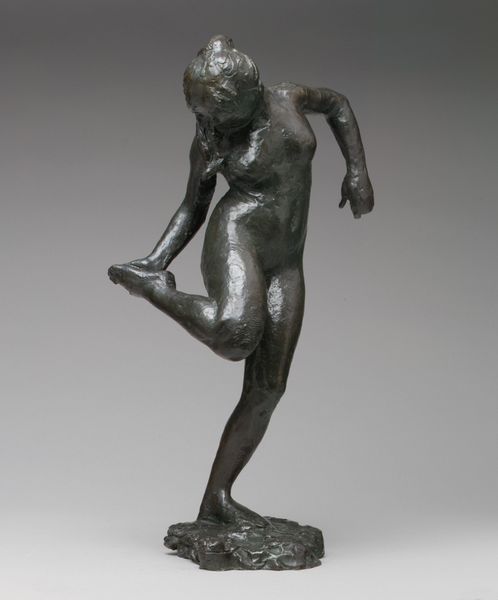
bronze, sculpture
#
baroque
#
sculpture
#
bronze
#
figuration
#
sculpture
Dimensions: 19 3/4 x 7 x 7 1/4in. (50.2 x 17.8 x 18.4cm)
Copyright: Public Domain
Curator: Before us stands a bronze sculpture titled “Cherub,” created around 1600 by an unknown artist, currently held at the Minneapolis Institute of Art. Editor: What immediately strikes me is the cherub's confident pose; the dark, lustrous bronze and swirling drapery imbue this piece with dynamism. There’s also an element of playfulness evident in the cherub’s upward gaze and raised hand. Curator: These kinds of images of cherubs gained considerable popularity during the Baroque period, acting as symbolic representations of divine love and innocence—but also importantly becoming motifs reproduced for a growing market of collectors interested in these types of works that once largely decorated church settings. The rise of academies also plays a huge role in that respect, allowing these symbols to proliferate and inform wider tastes. Editor: Right, the Baroque style! I notice the marked chiaroscuro effect in the bronze's patina and how this emphasizes its dimensionality. It calls our attention to both the folds in the fabric and his curly hair. Curator: Its artistic value should also be interpreted as part of the Counter-Reformation's use of such figurative work to emotionally appeal to believers, who had abandoned it in favor of a stricter protestant visual culture. The fact that this work is cast in bronze tells us something of the patron's status. Bronze sculpture became particularly fashionable, notably for smaller-scale works suited to private collection. Editor: And how interesting that bronze became associated with secular, artistic achievement and status, while it also served Counter-Reformation propaganda, creating a sense of drama! I see the spiral movement, from the draped sash to the scroll the angel holds in its raised arm. Curator: Exactly. Consider, too, how an object like this moves through time and contexts, from a possible devotional purpose in, say, a noble household chapel, to a prized collectible—eventually finding its place here in our contemporary museum setting. Editor: This piece allows me to visually grasp a whole history. The details and curves really encapsulate the style of the time. It shows its transition into a decorative piece with powerful Baroque artistic choices. Curator: For me, it serves as a reminder of art's dynamic engagement with power, religion, and patronage across historical eras, which continues to echo throughout today.
Comments
No comments
Be the first to comment and join the conversation on the ultimate creative platform.


